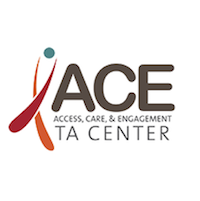
The Medicaid continuous coverage requirement ended March 31, 2023.
In early 2020, Congress put protections into place for people enrolled in Medicaid to ensure that they were able to stay covered during the COVID-19 pandemic. Under this policy, called the continuous coverage requirement, no Medicaid enrollee had their eligibility reviewed during this time. As of April 1, 2023, this protection is no longer in place and states have begun “unwinding” the continuous enrollment of Medicaid beneficiaries. In practice, this involves redetermining the eligibility of almost 93 million Americans enrolled into Medicaid, a herculean undertaking for state Medicaid offices.
During the unwinding process, approximately 15 million people, including people with HIV, could lose coverage. Of that, an estimated 6.8 million will lose coverage because of out-of-date paperwork or for waiting too long to respond to requests for information from Medicaid, even though they are actually eligible.
Understand your state’s process for Medicaid renewals.
- All states are required to develop and make available a renewal distribution plan. Each state’s plan can be located using this unwinding tracker developed by Georgetown University’s Center for Children and Families. It is important for RWHAP staff to understand their state’s plan and process for conducting Medicaid renewals.
- RWHAP recipients and subrecipients should know if and how a state’s ADAP is working with your state’s Medicaid program to identify individuals who may be losing Medicaid eligibility and who are eligible for ADAP. In some states, people living with HIV who are enrolled into Medicaid may not have been retained in ADAP and may no longer be connected to the RWHAP.
- Remain vigilant throughout the unwinding process, and be sure to report problems to your Medicaid office. If you or a client has a question or concern – or something just doesn’t make sense – don’t hesitate to reach out to your state’s Medicaid office.
Conduct outreach to clients and support enrollment into other coverage options.
- Inform clients enrolled in Medicaid about the ending of the Medicaid continuous coverage requirement and encourage them to confirm or update their contact information with their state Medicaid agency.
- Remind clients to check their mail frequently for letters from their state Medicaid agency, and respond promptly to requests for information. Support clients who need to submit documentation as part of their Medicaid renewal.
- Help eligible clients to identify other coverage options if they are no longer eligible for Medicaid. Be sure to explore all available health coverage options, including Marketplace, employer-sponsored insurance, and Medicare coverage. The goal is to avoid gaps in coverage and care, and ensure continuity of medication access for all RWHAP clients.
Prepare for a possible ADAP/RWHAP enrollment surge.
- Prepare staff for increased enrollment activities and provide training to new staff, or staff who have not recently provided enrollment support.
- Consider flexed staffing schedules as a way to provide enrollment support to clients before or after typical working hours.
- Build enrollment partnerships to help support enrollment needs of clients. This includes Certified Application Counselors (CAC), funded Navigators, or SHIP counselors (from the State Health Insurance Assistance Program) who can assist with Medicare enrollment.
Educate broader enrollment networks about the RWHAP.
- Many clients transitioning off of Medicaid may not be connected to the RWHAP and may receive enrollment assistance from Navigator entities, CAC organizations, or SHIP counselors who may not be familiar with the RWHAP and health coverage needs of people with HIV. Engage with these external enrollment entities in your area and make sure they are aware of the RWHAP, including the role of ADAP in supporting access to health coverage.
To stay up to date on unwinding related news, sign up for ACE TA Center’s e-newsletter. If you have any questions, email the ACE TA Center.